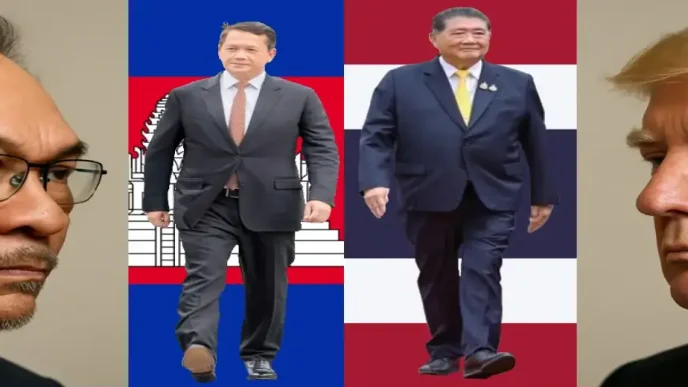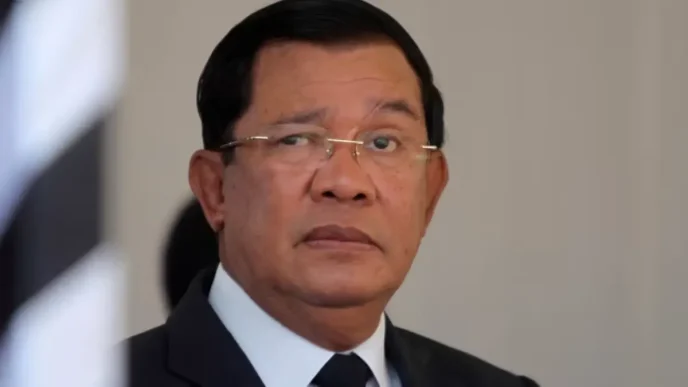In a stark reminder of the fragility of Singapore’s multiracial harmony, an 18-year-old student, identified as Nick Lee Xing Qiu, has been detained under the Internal Security Act (ISA) for his deep involvement in far-right extremist ideologies. Lee, who idolised the Australian white supremacist Brenton Tarrant—responsible for the 2019 Christchurch mosque attacks that killed 51 people—had expressed intentions to attack Muslims in Singapore and even role-played as a terrorist in online games, simulating violence against Muslims. This case, alongside two other recent ISA interventions involving radicalised individuals, underscores a growing global concern about far-right extremism seeping into the Republic’s tightly knit social fabric, particularly among vulnerable youth.
The Internal Security Department (ISD) revealed on 10 February that Lee was issued an order of detention in December 2024 after investigations uncovered his radicalisation journey, which began in early 2023. Influenced by Islamophobic and far-right content on social media, Lee spent hours consuming extremist material, including repeated viewings of Tarrant’s live-streamed attacks. His obsession escalated to the point of adopting Tarrant’s persona in a violent online simulation game, where he used modifications to recreate the Christchurch massacre at Al Noor Mosque. Beyond virtual spaces, Lee harboured real-world intentions, contemplating attacks on Muslims with homemade weapons or Molotov cocktails during religious holidays, though he lacked a concrete timeline and admitted to lacking the courage to act alone.
Lee’s case is not an isolated incident. The ISD also issued a restriction order to a 56-year-old housewife, Hamizah Hamzah, in January 2025, and arrested a 34-year-old Malaysian cleaner, Saharuddin Saari, in November 2024, both for supporting Islamist militant groups. While their motivations differ, the trio’s radicalisation highlights a broader spectrum of extremist threats facing Singapore. However, it is the far-right ideology, often associated with white supremacy but increasingly appealing to non-white individuals like Lee, who identified as an “East Asian supremacist,” that is raising particular alarm. Lee’s belief in the superiority of Chinese, Korean, and Japanese ethnicities, coupled with his support for white supremacy as a defence against what he perceived as a threat from Islam, reveals the complex, transnational nature of these ideologies.
A Growing Security Concern
Singapore is no stranger to the challenges of maintaining racial and religious harmony in a diverse society. The city-state’s strict laws and proactive security measures have long been credited with preventing communal tensions from boiling over. Yet, the ISD warns that far-right extremism, a growing global phenomenon, poses a unique threat. “Singapore is not immune to this threat,” the department noted, emphasising that such ideologies, while rooted in white supremacist narratives, often adapt to local contexts through broader themes of ethno-religious chauvinism, racism, and xenophobia.
Lee’s radicalisation was fuelled by the “Great Replacement Theory,” a conspiracy theory claiming that white populations in Western countries are being supplanted by non-white immigrants. In Singapore’s context, Lee interpreted this as a threat to the Chinese majority by a “rapidly growing Malay population,” as per ISD findings. He sought to instigate a “race war” between Chinese and Malays, using social media to propagate discriminatory rhetoric and connecting with far-right individuals online to discuss potential attacks. While investigations found no imminent threat, the intent to sow division in a society built on multicultural coexistence is deeply troubling.
This case marks the third instance of a Singaporean being dealt with under the ISA for far-right extremism. In December 2020, a 16-year-old boy, also radicalised by Tarrant’s actions, was detained for planning attacks on mosques. Another Secondary 4 student, identifying as a white supremacist, received a restriction order in January 2024 for planning overseas attacks. The common thread in these cases—youth vulnerability—has prompted the ISD to highlight the susceptibility of young people to extremist ideologies. “Youths may gravitate towards the sense of belonging and identity that far-right movements appear to provide,” the department stated.
The Role of Online Platforms
A significant factor in Lee’s radicalisation, and that of other youths, is the pervasive influence of online platforms. Social media and gaming environments have become fertile ground for extremist recruitment, offering immersive experiences that can normalise hate and violence. The United Nations Office of Counter-Terrorism flagged this issue in 2022, noting how extremists create modifications for popular games like The Sims, Minecraft, and Roblox to replicate real-world atrocities or build virtual ethnostates. In Singapore, a 16-year-old student was issued a restriction order in January 2023 for engaging with Roblox servers simulating conflict zones linked to terrorist groups like ISIS.
Lee’s engagement with a violent simulation game, where he role-played as Tarrant, exemplifies how digital spaces can amplify radicalisation. Without naming the specific game, the ISD noted that Lee downloaded modifications to tailor his virtual experience to mirror the Christchurch attack. This blurring of virtual and real-world intent raises questions about the regulation of online content and the responsibility of tech platforms to curb the spread of extremist material. While Singapore has stringent laws under the ISA to address direct threats, preventing the initial exposure to such content remains a complex challenge in an era of borderless digital connectivity.
Societal Implications and Government Response
The broader implications of far-right extremism in Singapore extend beyond individual cases to the very foundation of the Republic’s social harmony. Minister-in-charge of Muslim Affairs Masagos Zulkifli, also the Minister for Social and Family Development, underscored this in a Facebook post on 10 February. “The social harmony that we have today did not come about by chance,” he wrote. “It is the result of many decades of our hard work to foster peace and security in Singapore together.” He urged citizens to remain united and vigilant, reporting any signs of radicalisation to the authorities.
The ISD has echoed this call, providing a hotline (1800-2626-473) for the public to report potential cases. Signs of radicalisation, they note, may include overt expressions of hostility towards specific communities, withdrawal from social circles, or obsessive consumption of extremist content. In Lee’s case, his family, teachers, and schoolmates were unaware of his radicalisation, highlighting the often hidden nature of this process and the need for community awareness.
The government’s response under the ISA demonstrates a zero-tolerance approach to any form of armed violence or hate speech that threatens Singapore’s multiracial and multi-religious society. The detention of Lee and the restriction orders for others signal a proactive stance, but the ISD acknowledges that enforcement alone is insufficient. Addressing the root causes—social isolation, online exposure, and identity crises among youth—requires a multi-pronged strategy involving education, community engagement, and international cooperation to tackle digital extremism.
A Fragile Harmony Under Threat
Singapore’s success as a multicultural society has long been a point of pride, but cases like Lee’s reveal the undercurrents of division that can be exploited by extremist ideologies. Far-right narratives, though originating in Western contexts, have shown a disturbing adaptability to local grievances, as seen in Lee’s fixation on ethnic demographics within Singapore. His tattoos and T-shirts bearing neo-Nazi and white supremacist logos, as reported by the ISD and The Straits Times, are not just symbols of personal belief but a public declaration of ideologies antithetical to the Republic’s values.
As the ISD continues to monitor and act against such threats, the onus also falls on society to reinforce the bonds of trust and understanding that define Singapore. The rise of far-right extremism, particularly among impressionable youth, serves as a cautionary tale of how global ideologies can take root in unexpected places, challenging even the most resilient of social frameworks. For now, the government’s firm actions and calls for vigilance offer a bulwark against division, but the battle for harmony is far from over. If left unchecked, the seeds of hate sown online and nurtured in isolation could pose a far greater risk to Singapore’s future than any single act of violence.














